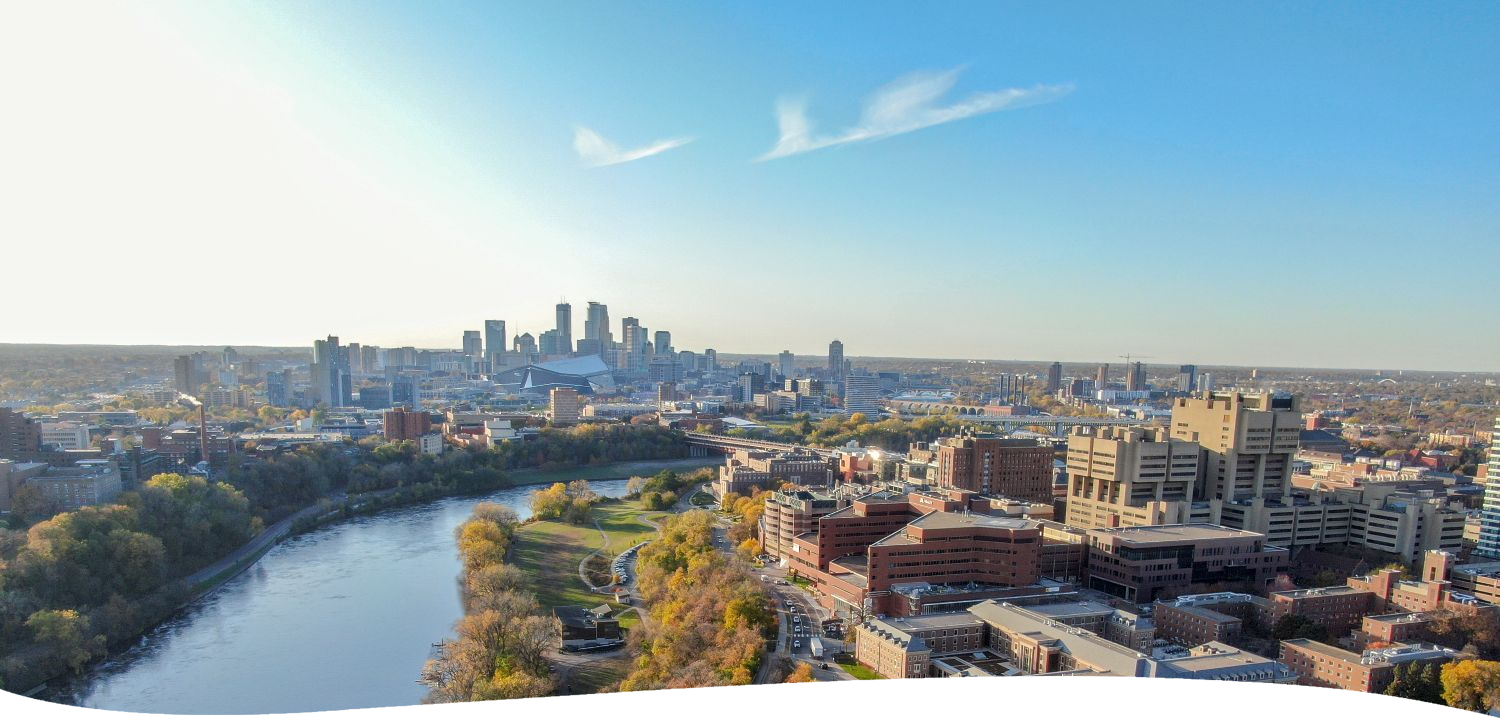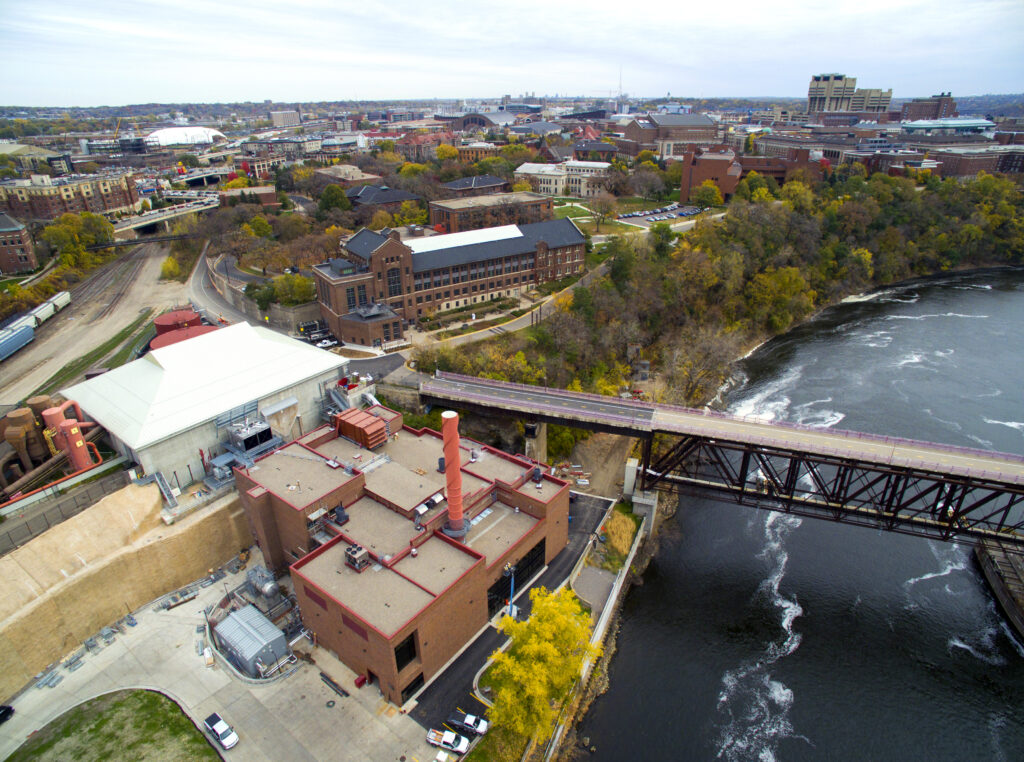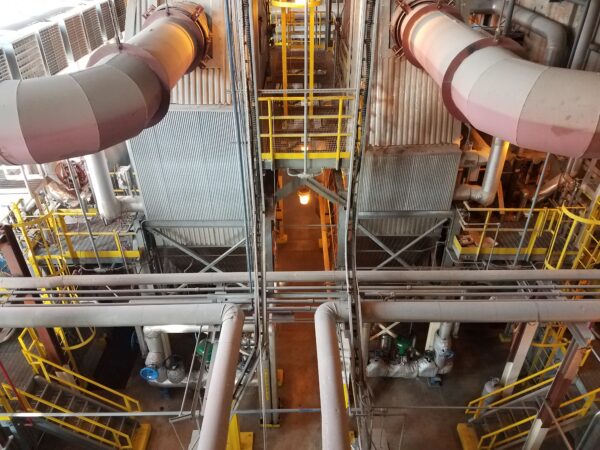
Operating and Managing the Energy Systems of Minnesota’s Largest University Campus
The University of Minnesota Twin Cities campus spans 30 million square feet and more than 250 buildings, serving 56,000 students and 25,000 faculty and staff. To power this footprint, three steam plants provide heating — two of which also generate electricity.
Main Energy Plant and Southeast Heating Plant
The Main Energy Plant, revitalized in 2017, adds reliable capacity and reduces the University’s carbon footprint. Originally built in 1912, the Main Energy Plant provides steam, electricity, and chilled water to the campus using combined heat and power consisting of a 23 MW dual fuel combustion turbine generator as well as a 272,000 lb/hr heat recovery steam generator and two 3,000-ton chillers.
The Southeast Heating Plant began service in 1902 to power the historic Minneapolis streetcar system. Today, the plant provides steam to the Minneapolis campus at near saturated conditions. Two high-pressure boilers produce steam, which is then sent to an extraction/backpressure steam turbine generator. The boilers share a desuperheater and pressure reducing station, which can be used to bypass the steam turbine to the 200 psig distribution header when the turbine is unavailable. A remaining low-pressure boiler feeds the distribution header via a separate pressure reduction station.
The Southeast Heating Plant and the Main Energy Plant connect to a common campus steam distribution and condensate return system through a network of tunnels on campus, allowing the Southeast Heating Plant to supplement the Main Energy Plant with three boilers and a 16 MW extraction/backpressure steam turbine.

The Main Energy Plant overlooking the University of Minnesota Twin Cities campus

Package boilers in the Southeast Heating Plant
St. Paul Heating Plant
The St. Paul Heating Plant, constructed between 1955-1957, houses two boilers that are routinely on-line to meet campus requirements. Three boilers available as backup.
Ever-Green’s Role
Since November 2024, Ever-Green has led operations and management of the University of Minnesota Twin Cities campus’s district energy system, transitioning 47 team members onto the Ever-Green team.
About the University of Minnesota Twin Cities
One of five campuses in the University of Minnesota System, the University of Minnesota Twin Cities is the flagship and founding campus of one of the most prestigious public research universities in the nation. With more than 47,000 undergraduate and graduate students, it is also one of only five university campuses in the U.S. with an engineering school, medical school, law school, veterinary medicine school, and agricultural school all on one campus. Visit umn.edu.
About the University of Minnesota
The University of Minnesota, with campuses in Crookston, Duluth, Morris, Rochester and the Twin Cities, is driven by a singular vision of excellence. We are proud of our mission of accessible world-class education, groundbreaking research, and community-engaged outreach, and we are unified in our drive to serve Minnesota, the nation and the world. Visit system.umn.edu.

